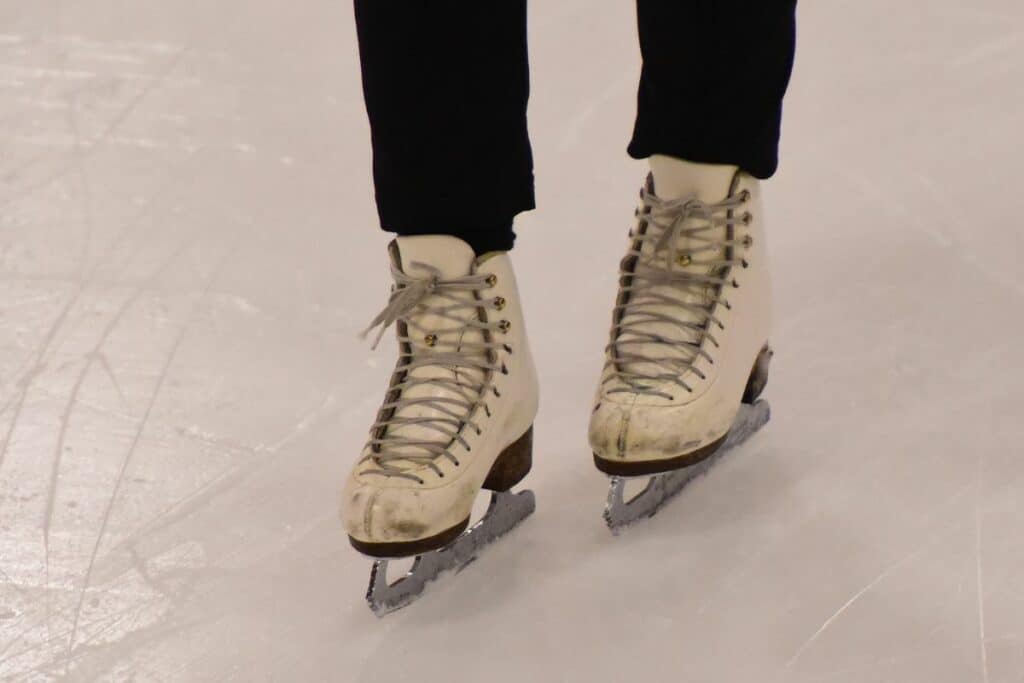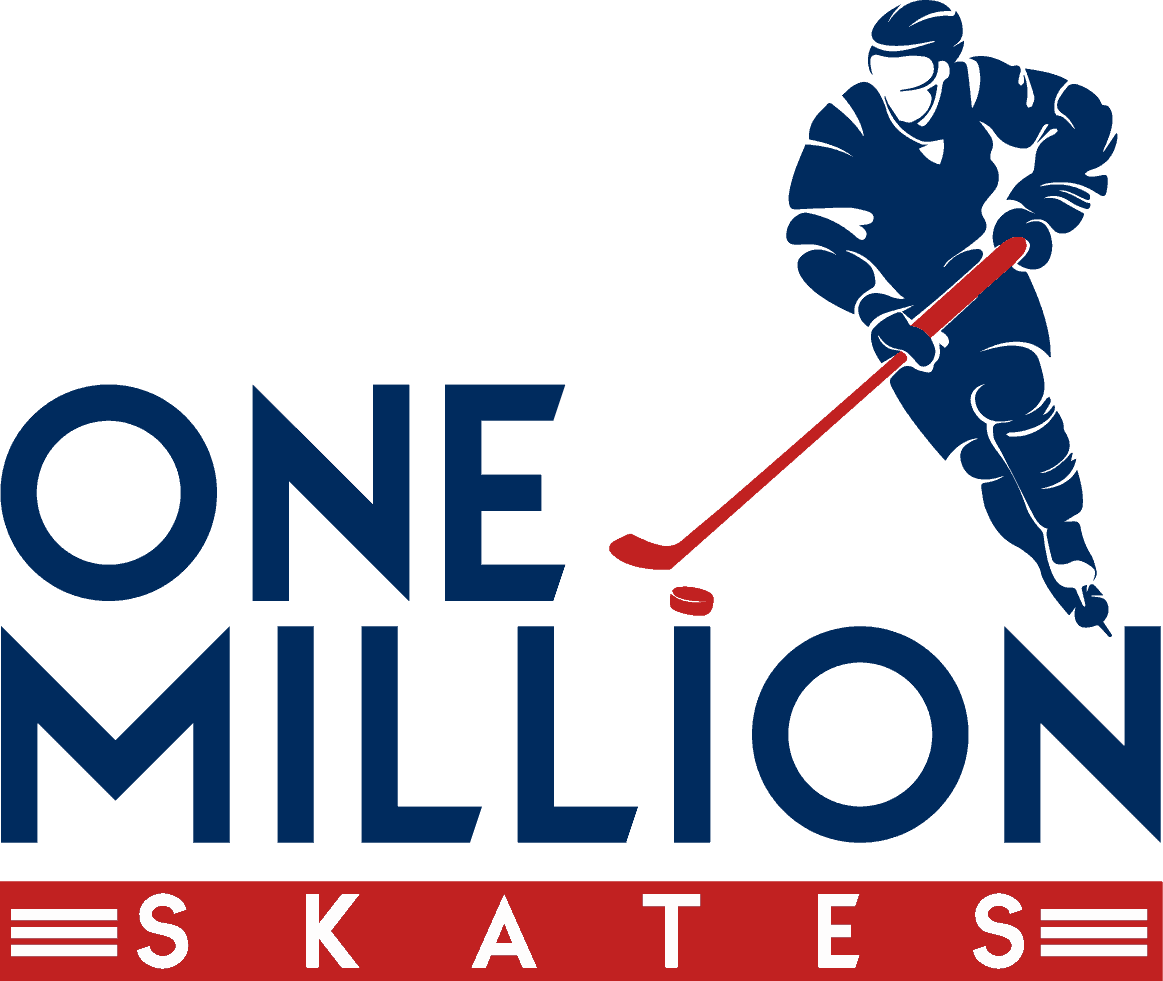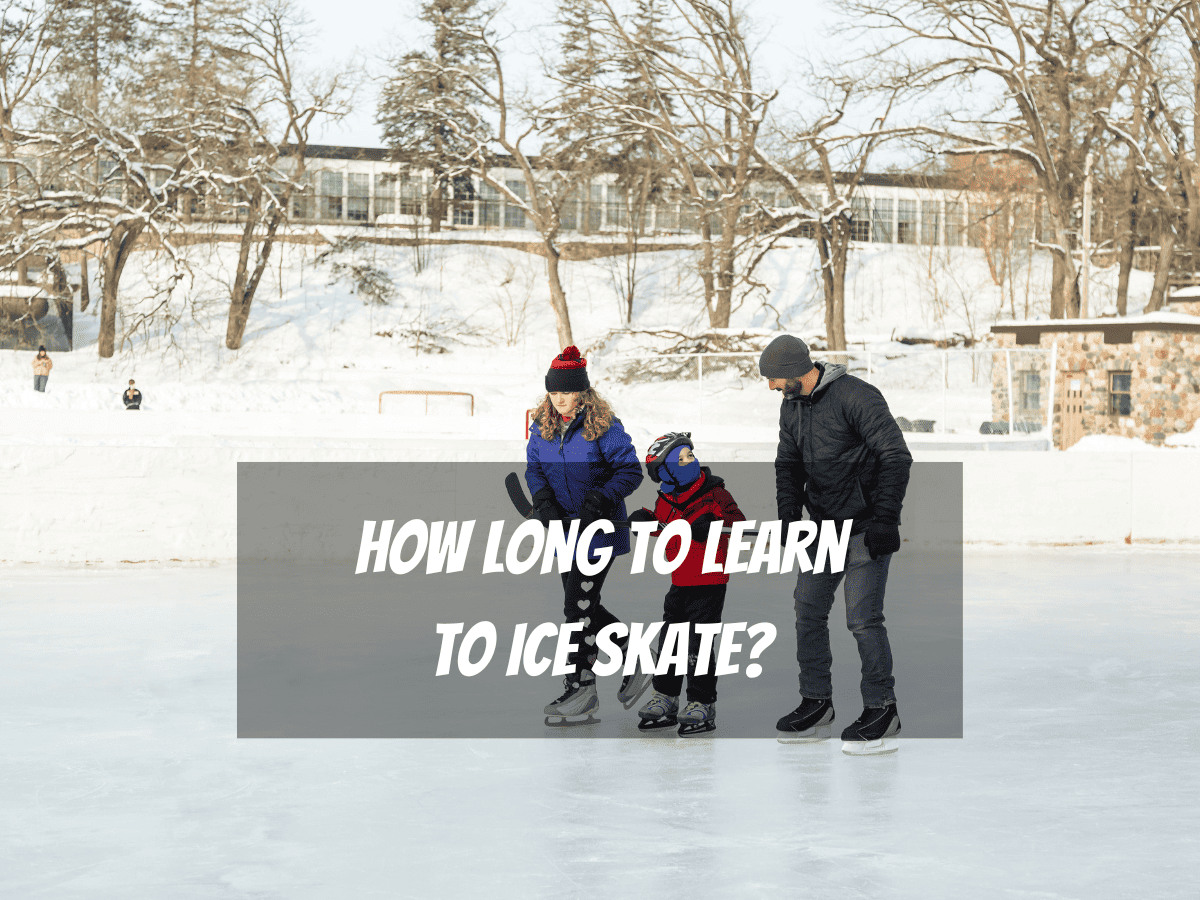How lengthy is the learning curve for ice skating?
There are a number of elements that might affect how long it takes to learn anything.
How lengthy is the learning curve for ice skating?
Seven to ten hours should be required to master the essentials.
That is completed over a period of two months, not in a single day.
This is approximately once every week for an hour.
If you are able to come twice each week, that is ideal.
Multiple visits to the rink will let you rest between each practice session, so enhancing the learning process.
Does It Take Long To Learn The Ice Skating Basics?
As said earlier, seven to ten hours, depending on what you deem to be the essentials.
The fundamentals we have been referring to include the ability to glide on two feet, spin on the spot, and move forward with some degree of control.
Group courses are excellent for learning how to skate, but if you need to learn quickly for a date or something else, you can only attend them once per week.
If you practice several times each week, you will be able to perform well on your own (only to get your basic balance and get moving; you will need lessons for the more difficult tasks).
Is Ice Skating Hard To Learn?
Ice skating is tough to master for the average individual, but not impossible.
Balance is difficult in ice skating owing to the tiny blades.
It is initially challenging, but after a few weeks of practice and learning to maintain balance, it becomes very simple and you may raise your pace.
On average, two to three hours of practice are required to grasp the foundations of ice skating, however, it may take more than thirty days to become an expert.
Everyone learns at a different pace, and this rate depends on a number of factors.
Estimating the amount of time necessary to perfect a skill requires consideration of a variety of variables.
For instance, you may master ice skating in a couple of weeks or it could take many months.
How Should Beginners Learn To Ice Skate?
On the ice, novice skaters learn fundamental maneuvers such as maintaining balance and advancing.
Fear of falling makes this phase difficult for the majority of people.
A coach may train you on how to avoid and recover from falls.
Self-teaching is still possible for these strategies.
After achieving balance, you may learn to advance.
Once you can stand on skates without falling, this level may be rather easy.
Complex maneuvers, such as skating backward, may need additional guidance and coaching from a professional coach.
Stopping will be the second skill you learn. Learning this maneuver might prevent a fall.
Once you understand how to stop, you will be able to travel without problems and reach your destinations.
A coach can teach you several ice-skating stopping techniques.
At local skating rinks, beginners can learn to skate independently or with the aid of a coach.
The latter can improve the efficiency and safety of learning.
In addition, they may help you find advanced strategies that you may not have discovered on your own.
Can Adults Learn Ice Skating?
Indeed, adults can learn to ice skate.
Although younger ice skaters may recover from mishaps more rapidly than older skaters, there is no upper age limit for starting to ice skate.
Adults and children have the same amount of difficulty while learning to ice skate, but youngsters may have a big advantage.
Children are less concerned than adults about making mistakes or seeming foolish.
This method will reduce the learning curve for this group.
Adults are more cautious and reticent to avoid seeming foolish, which might limit their ice skating development.
Is Ice Skating Harder Than Roller Skating?
Initially, ice skating is more challenging than roller skating for novices due to the small blades of ice skates, which make maintaining balance more difficult.
However, there are few distinctions between the two sports.
It is easier to glide on roller skates and stop and turn on ice skates because their blades are designed for this function.
How Often Should You Practice Ice Skating?
You will acquire information if you go once every week.
The problem is that when you go once a week, you spend half of your time trying to remember what you did the previous week.
If you can work out twice a week, you will improve more quickly and add more to each session.
When beginning to ice skate, you should not be afraid to grab onto the sides.
Walking should be mastered before running.
Therefore, when you first go onto the ice, do not be afraid or embarrassed to hold onto the barrier as you skate.
As your equilibrium improves, you will begin to hover your hand above the object rather than grasp it.
We suggest that you hover your hand over as quickly as possible.
When grabbing the railing, you tend to pull yourself forward.
This causes you to walk with shuffling feet. You are dragging yourself along and shuffling your feet rather than skating.
Your hand alternates between being in front and behind you as you hold the railing and pull yourself along.
This is troublesome since it changes your center of gravity to the rear, increasing your likelihood of falling backward.
Tips For Learning Ice Skating Easily
Get The Right Skates
Although it appears obvious, many people really neglect it.
Purchasing ill-fitting ice skates may cause discomfort and make learning to skate more challenging; if you choose skates that are too short, you may even get blisters.
Get Instruction From An Instructor
It is far easier to learn ice skating from an instructor than to train oneself.
It will take some time to educate yourself on a range of themes, including balancing, turning, stopping, and many more.
If you have a friend with substantial ice skating experience, you should seek their guidance.
If you are unable to acquire assistance from a trainer or a buddy, you can rely on the internet.
You may discover a number of online ice skating tutorials on YouTube, as well as other websites devoted to skating.
This will help you accelerate the ice skating instruction procedure.
Ignore The Fear Of Falling
Almost everyone who wants to start ice skating or is currently skating is terrified of falling.
This anxiety reduces the learning curve tremendously.
Consider that the floor is composed of wool and that falling will result in no harm. There is no need to hurry; go carefully and without haste.
If you have a positive outlook, you will fear falling less.
Walk With Your Skates
Initially, simply walk normally while wearing ice skates.
This can help you develop your equilibrium, the most common difficulty for the majority of people.
Before skating, perform this for at least 10 minutes. If you have never skated before, you should not always do this.
Tips For Ice Skating For The First Time
When first learning to ice skate, tentatively takes the first steps onto the ice.
If you step forward as you walk onto the ice, you may lose control of your skates.
Proceed laterally while grasping the barrier. This will prevent your skate from slipping away.
Body Position
Extend your arms to the side and forward slightly. Therefore, they create a delicate V.
This stance will maximize your balance, and extending your arms forward softly will prevent you from falling backward.
Foot Position
You must place your feet in a V formation. Thus, your heels are closer together than your toes.
Not an excessive V shape Avoid standing with your feet parallel.
When your feet are parallel, you have no traction and nothing to push from.
Consequently, you end up going nowhere and running in place.
If you do go someplace, it is due to toe pushing, which is not the intended manner of skating.
Skating Forward
When your feet are in the V posture. Begin the forward movement by placing each foot in the blade's center.
This might result in a "clip-clop" sound. You may get the sensation that your skates are sliding away.
This immediately turns into skating.

What Are Ice Skating’s Fundamentals?
Ice skating demands the ability to rise after a fall above anything else. It is nearly impossible to stand up from a prone posture.
You must go on all fours, placing one skate on the ice, and then push yourself up from that position.
You can push with your hands off your knee if you need to.
Additionally, the idea is that you can stand still and remain solid.
You are not compelled to relocate if you do not choose to.
The capacity to push ahead and initiate skating.
How Long Does It Take To Become A Confident Ice Skater?
When starting to ice skate, how long does it take to overcome the fear factor?
This area is mostly designed for adults. Typically, children are less afraid than adults.
It is typically the adult's fear, not their skill, that impedes the learning process.
Age increases our dread. Often, conquering fear is as vital to success as technical mastery.
This is just another incentive to skate several times each week. It accelerates your learning and increases your confidence.
Important abilities include learning how to push and glide on two feet and how to get up off the ice.
The best approach is to grasp the fundamentals.
Too often, novice skaters try harder maneuvers than they have seen others do, resulting in injury.
Attending a skating class is the most efficient way to learn order.
How Long Does It Take To Learn To Skate With Lessons?
With practice, it will take less time to greatly improve over time (Find out the Pros And Cons Of Spring Hockey here).
Especially if you are in a hurry and cannot wait for group classes, you may learn the fundamentals independently.
While a mentor is always advantageous. If you are committed to the long haul, you should enroll in classes.
What Are The Benefits Of Figure Skating Training?
When taking lessons or enrolling in a learn-to-skate course, you will be instructed on the proper manner to execute components.
In addition, you will be taught in the correct order. Which is crucial.
Each element you are taught to memorize logically follows the one before it.
This ensures continuity and hastened growth.
Group skating lessons are a cost-effective solution for skaters of any age.
Learn-to-skate programs vary greatly from nation to nation, but they always give professional teaching based on set criteria.
Skating instruction programs do inspire higher effort (Here are some Ice Hockey Quotes To Inspire Your Team). In addition, they impose adequate restrictions to make learning methodical and secure.
How Long Does It Take To Learn More Complex Parts Of Ice Skating?
Before you can execute intricate maneuvers, you will typically need six to twelve months of skating experience.
It relies on your athletic ability and practice frequency.
Nevertheless, as a general rule. If you get coaching or group lessons, you begin doing leaps, spins, and spirals around the six-month point and often before the one-year milestone.
Can You Learn To Ice Skate On Your Own?
Most individuals have, at some point, lusted after ice skaters or figure skaters on television.
You may question if you can learn to ice skate alone.
Yes, but you will have to commit multiple errors that you might have avoided.
For example. If you have never laid a brick before, you must first make a wall before you may build one.
The structure may collapse the first time it is constructed.
The second time you make it, it may stand upright, but it is not straight.
You would finally create a respectable wall by trial and error.
Imagine you must build a wall from scratch once again.
A skilled bricklayer will instruct you on how to proceed this time. You would learn much faster if you made fewer errors.
Developing ice skating abilities is comparable.
You can learn the foundations on your own, and you will eventually need to.
You will likely learn to ice skate more quickly and safely if you have a professional tutor.
How Long Does It Take To Teach Yourself Ice Skating?
Certainly, you may study on your own, especially in the beginning when you are establishing your footing and figuring out how to proceed.
Still, it will take you seven to ten hours to establish basic balance, get up, and move ahead on ice.
Without a coach, you are unlikely to be instructed on how to get up after a fall or given the fundamental arm and body positions for safe skating.
Thus, you can learn the basics of skating on your own, but you will be stuck there.
Without guidance, there is no meaningful way to get beyond the essentials.
How Long Does It Take To Learn Jumps, Spins, And Spirals?
It will take an age to accomplish, if ever. They are far more challenging than they look.
Keep in mind that when you see someone doing a jump or a spin on television, they have spent hundreds, if not thousands, of hours under the tutelage of a professional mastering these elements.
What Are The Benefits Of Working With A Coach?
Without a coach, it is impossible to perfect spins and jumps.
If you intend to learn these components, you require a coach.
It is impossible to enumerate all the benefits of having a coach because there are so many.
They are crucial for jumps and spins.
A coach may instruct you on how to prepare for a leap or spin (how to initiate it), as well as proper arm and body position, so making the component simpler to comprehend.
In addition, they train you on the egress (landing posture) and additional safety procedures.
Final Thoughts
Skating on ice may look intimidating, but it is a skill that can be acquired with the correct equipment and perseverance.
Select the appropriate material to assure your safety on the ice.
Learn a few essential movements. Work on your technique.
Enroll in courses if you are determined to master figure skating.
Use lightweight clothes that do not become burdensome when wet during ice skating.
As you move about while skating, your body will grow warmer, preventing you from feeling chilly on the ice.
Think of matching a fitted blouse with leotards, tights, or leggings.
Given that falling is fundamental to the action, it makes sense that this would occur.
Using the correct technique when falling prevents injuries. Practice falling should be the primary step.
When you feel yourself losing your balance, follow the instructions below to fall appropriately.
Undoubtedly, lessons will increase your learning. A coach may illustrate in minutes what would take you weeks to find out on your own.
If you are serious about ice skating, you must pick between group sessions and private lessons.
The bulk of learn-to-skate programs follows a logical development in their curriculum.
You are taught many methods that build upon one another. It is easy to try to skip stages, perform things for which you are not prepared, and neglect important information when studying on your own.

